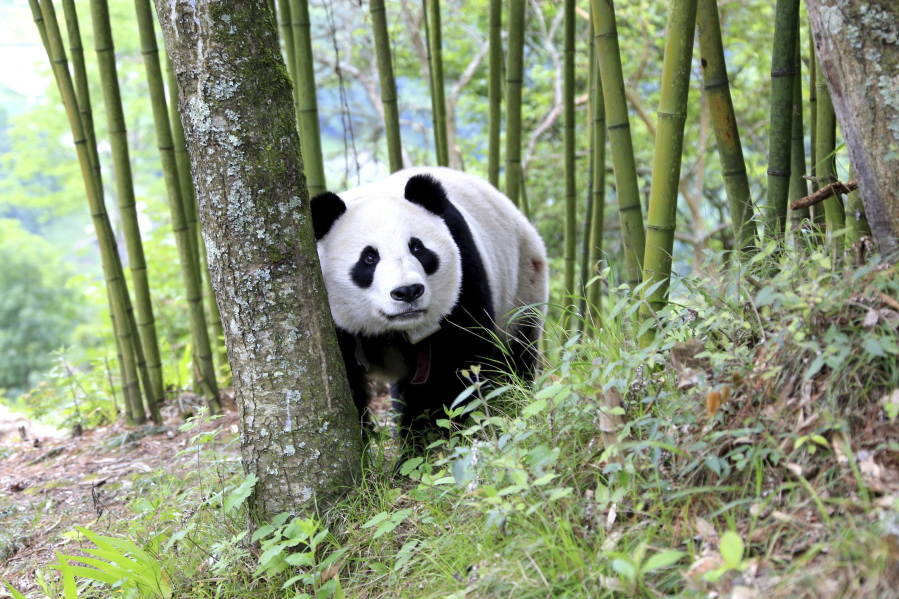Saving the giant panda from extinction isn’t just good for the bears — it’s good for the bottom line too, a new analysis by an international team of scientists shows.
The results, published in the journal Current Biology, highlight the economic benefits that they say go hand in hand with environmental conservation.
“Our analyses indicate that further investment in panda protection can be a beneficial strategy for both people and pandas,” the study authors wrote.
Giant pandas, known officially as Ailuropoda melanoleuca, are the rarest of the bear species. They make their homes in the mountainous bamboo forests of western China. With their round faces, black-and-white markings and toddling gait, they may also be the most beloved — long lines are known to form at the panda exhibits in U.S. zoos, which often set up “panda cams” for viewers to check in on the animals from afar.
But pandas fell on hard times in recent decades, thanks largely to human encroachment. In 1980, their habitat covered 25227 square kilometers; by 1990, it had been cut to just 7667.
In that single decade, their numbers plummeted from 2,459 to 1,112. The International Union for Conservation of Nature’s Red List declared the giant panda an endangered species in 1990. Their habitat had not just shrunk — it had become fragmented, making it harder for pandas to move to new areas to find food and seek out mates.
In the years since, Chinese officials began making significant efforts to save the panda from extinction, establishing more panda reserves and increasing the reserve area 3 1/2-fold from 1980 to 2010. Panda numbers gradually began to recover, hitting 1,596 in 2000 and 1,864 in 2010. In 2016, the IUCN Red List reclassified the panda from endangered to vulnerable.
“It is clear that society’s investment has started to pay off in terms of panda population recovery,” the study authors wrote.
Panda habitat and numbers are still well below their numbers in the 1980s, but even this relative step away from extinction has come with its own critics, the scientists said.
“Some journalists have suggested that it would be best to let the panda go extinct,” the study authors wrote.
So for this paper, a team of researchers from China and several other countries sought to calculate the economic value that panda conservation generates, using a framework called the Common International Classification of Ecosystem Services.
In order to protect giant pandas, the government must protect their forests, which provide a host of often-underappreciated services to the communities that live in and around them. For example, forests allow for the growing of crops and the grazing of animals, store and clean fresh water, supply firewood and many useful plants.



